What to see near our accommodation.
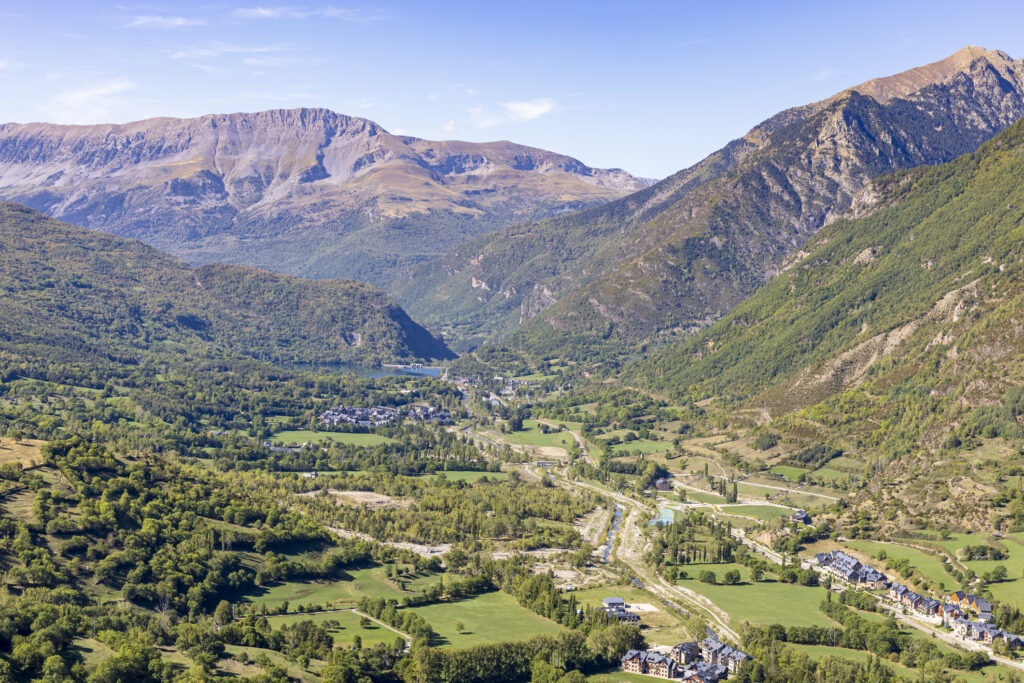
The nerve centre of the valley is the village of Benasque. As well as a beautiful town centre, here you will find all kinds of tourist services, from shops to hotels and restaurants.
If you're in the mood for snow, head for the Aramón Cerler ski resort, very close to Benasque. At Llanos del Hospital you can go cross-country, Nordic and cross-country skiing, and in summer you can enjoy the walks.
But without a doubt, the best way to get to know this paradisiacal valley is to walk along its many trails. If you are not in very good physical shape, don't worry, as there are routes adapted to all ages and levels of fitness. Thanks to them you will be able to experience nature in its purest form. We especially recommend the famous excursion that will take you to the beautiful Forau D'Aiguallut waterfall.
In the vicinity of Benasque, it is worth taking a stroll around the small village of Anciles and admiring its beautiful ancestral homes. Eriste, also nearby, is a good starting point for approaching the Posets massif, the second highest peak in the Pyrenees. At its feet you will find the valley of the Ibones, with the lake of Las Alforjas, the Ibón de Posets or the lake of La Plana as reference points. The part of Escarpinosa (with the Escarpinosa lake and the lakes of Batisielles and Aigüeta de Batisielles) and Perramó, the boundary between the Estós and Eriste valleys, offers incredible landscapes.
The easternmost section of the Benasque valley is full of mountain lakes. The valley is crowned by the Aneto, the second highest peak on the Peninsula, and the Maladeta. It is precisely here where some of the last ice tongues of the Aragonese Pyrenees are found, protected under the denomination of Natural Monument of the Pyrenean Glaciers. They are the southernmost glaciers on the European continent.
Make the most of your visit to the Benasque valley to see Graus and the Buddhist temple of Panillo. In the nearby Isábena valley are hidden two authentic Romanesque gems: the monastery of Obarra and the cathedral of Roda de Isábena, and a little further east is the valley of the river Noguera Ribagorzana, the natural border between Aragon and Catalonia, where the magnificent medieval village of Montañana stands.
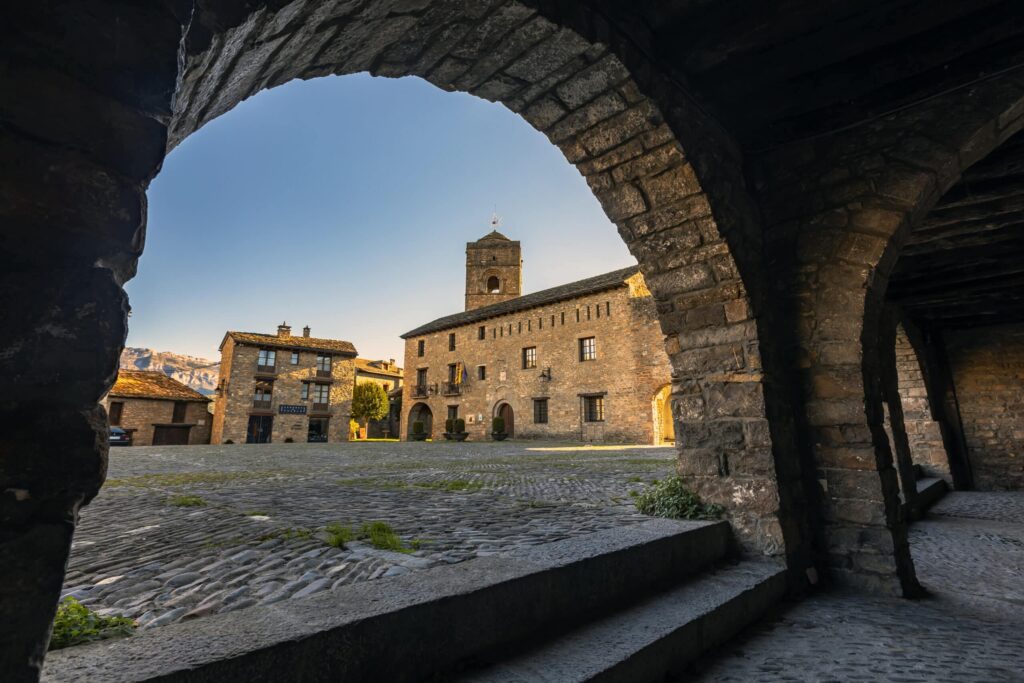
In its old quarter, time seems to have stopped in the Middle Ages, and it is not in vain that it is listed as a Historic-Artistic Site.
The focal point of the town is its porticoed main square where, on the first Sunday in September of even-numbered years, the triumph of the armies of King García Ximenez over the powerful Saracen army is commemorated, with the help of divine intercession in the form of a cross. This re-enactment is known as La Morisma.
In the background stands the Romanesque church of Santa María, considered to be one of the best examples of Romanesque architecture in Alto Aragón. Don't miss its beautiful cloister, where Romanesque and Gothic styles come together.
Continue your visit by walking around the remains of its castle. In this beautiful setting, the Aínsa Castle International Music Festival is held every summer. Complete your visit with the Ecomuseum of Pyrenean Fauna, located in the castle's keep.
Hiking and nature lovers can follow the route that runs between Aínsa and Boltaña.
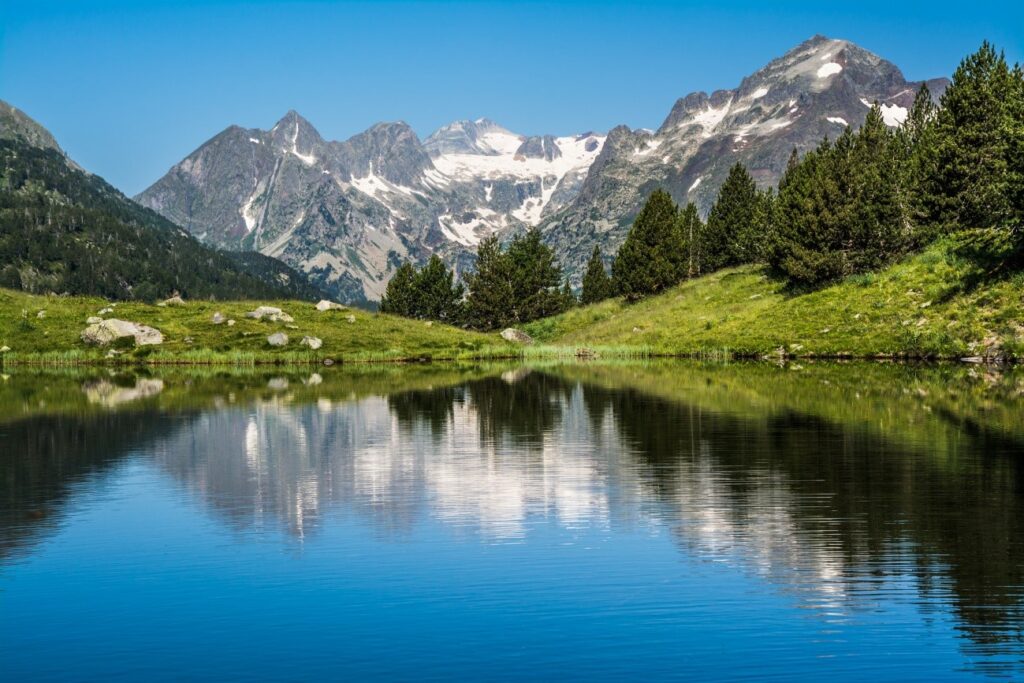
The Park, which includes the municipalities of Gistaín, San Juan de Plan, Sahún, Benasque and Montanuy, offers endless possibilities for hiking, mountaineering, skiing and climbing, which facilitates a consolidated hotel offer, several mountain refuges and an extensive network of signposted trails.
The highest peaks in the Park, the Aneto (3,404 m) and the Posets or Llardana (3,369 m), are the highest in Aragon and in the Pyrenees mountain range. Together with the Pico Maldito, the Maladeta and the Perdiguero, they constitute a real paradise for mountaineers.
In this park you will have the privilege of contemplating more than a hundred lakes of glacial origin with bluish waters (known in Aragon as ibones), impressive waterfalls and a good number of icefields.
Today, the last ice tongues of the Aragonese Pyrenees are protected under the denomination of Natural Monument of the Pyrenean Glaciers, being the southernmost permanent glaciers in the European continent.
Some of the best-known hiking routes in the Posets-Maladeta Natural Park are those that run along the GR 11 long-distance footpath. The route of the three refuges (Estós, Viadós and Ángel Orús), located around Posets, allows you to contemplate all the faces of this colossal massif. We especially recommend the excursion that will take you to the Forau de Aigüalluts waterfall, a simple route that is ideal for children.
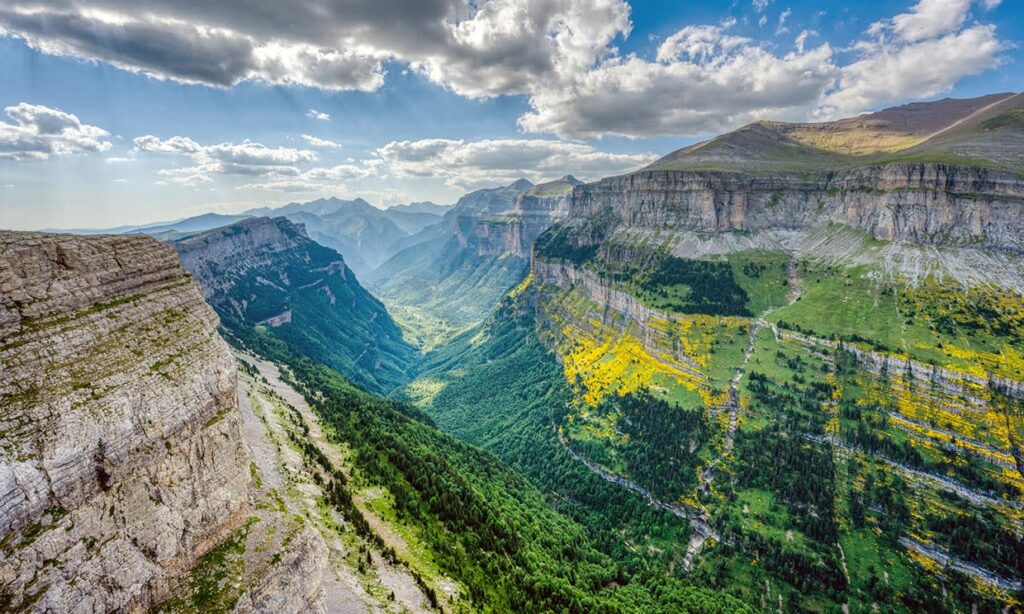
The Ordesa Valley is the soul of the park. Walking along its paths, blending in with the surroundings, is an experience that will remain in your memory forever.
Thousands of people from all over the world come here, at any time of the year, to admire wonders such as the Tozal del Mallo, the Estrecho waterfall, the Gradas de Soaso or the Bosque de las Hayas. There are an infinite number of excursions and ascents that you can do in this valley at any time of the year. The one that takes you to the Cola de Caballo waterfall is a classic, as its beauty and ease make it suitable for everyone.
Vultures, eagles, bearded vultures, bearded vultures, bearded vultures and marmots coexist in dense beech and pine forests; clear rivers and lakes, high mountain meadows and dizzying rocky outcrops.
At the entrance to the Ordesa Valley lies Torla, a charming, typically Pyrenean village that provides visitors to the Park with all the services they need to enjoy their stay.
The Añisclo Canyon, which can be reached from Escalona, is like a deep gorge that cuts through the mountain from north to south.
The Escuaín Gorges, which you can reach from the village of the same name, are another example of the power of nature. Escuaín is the smallest of the four valleys that make up the national park and, possibly, the least visited; however, the beauty of its gorges is certainly worth a visit. Moreover, from here you will be able to observe various protected bird species.
The Pineta valley is a peaceful and bucolic valley with the typical U-shaped profile of glacial origin. Surrounded by powerful ridges and wooded slopes, it ends before the mass of the Three Sorores: Monte Perdido, the Cilindro de Marboré and the Soum de Ramond, which will force you to look up to over 3,000 metres. This valley is accessed via Bielsa, famous for its carnival, the most popular and traditional in Alto Aragón.
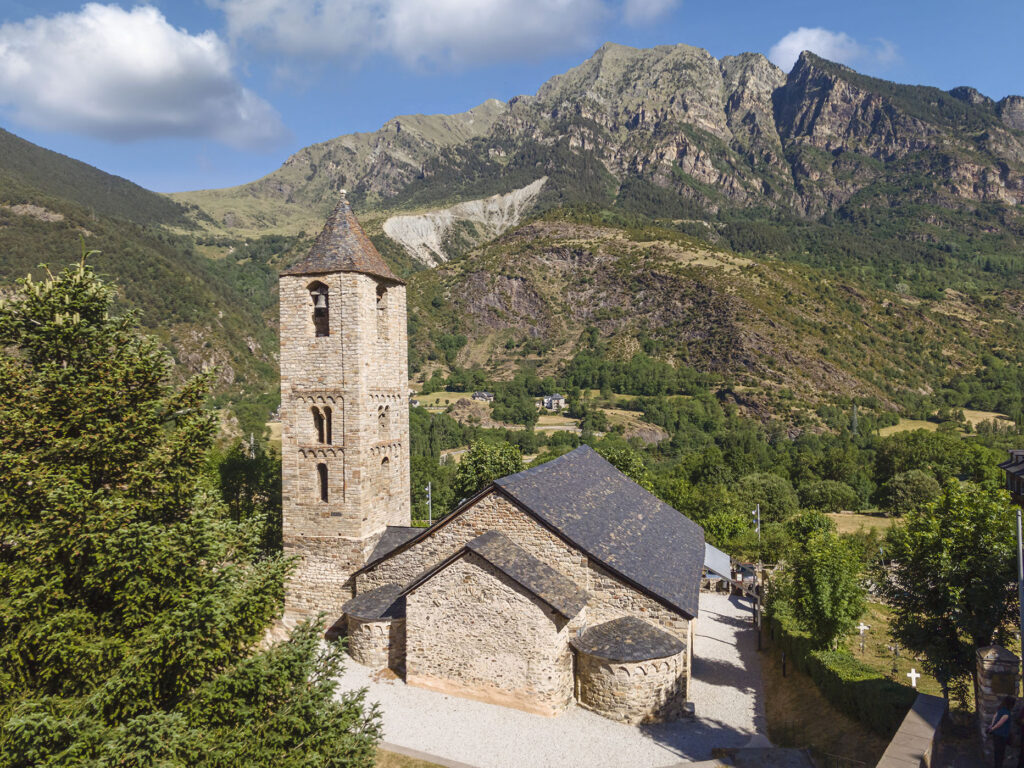
You can discover in a pleasant way how the Romanesque style arrived here, where its iconography comes from, what medieval society was like, what techniques were used in the construction and decoration of the churches, the appearance of these temples at the beginning of the 20th century and finally the voices of the past explain their link with the Romanesque heritage of the Vall de Boí.
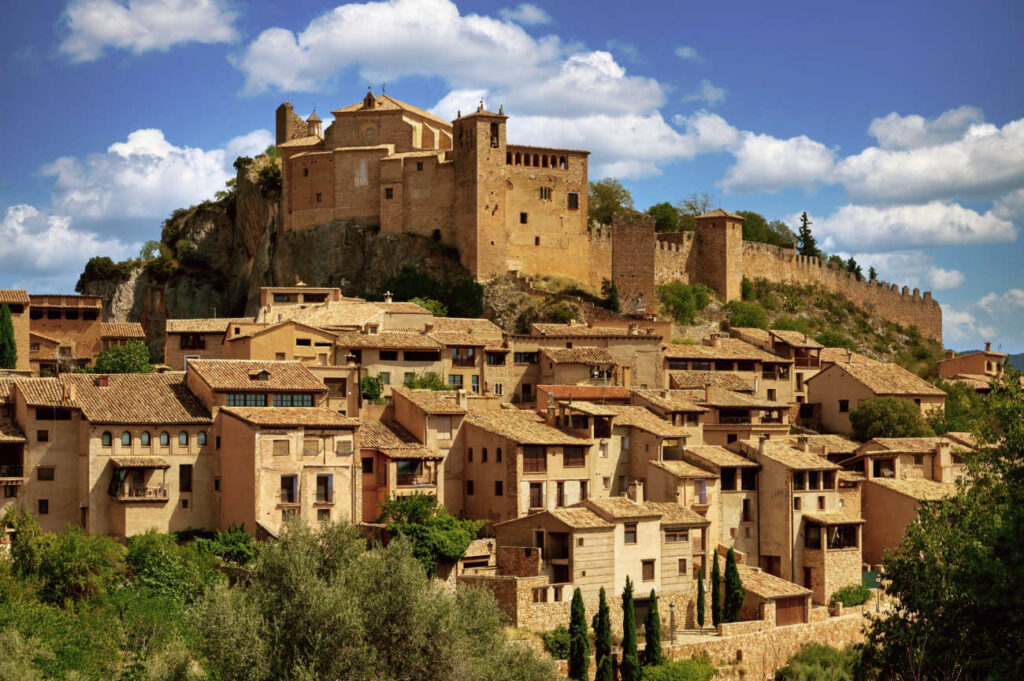
Its hamlet spreads out at the foot of its castle of Islamic origin, converted into a collegiate church after the Christian reconquest, while the river Vero crosses its last canyon before opening out into the valley.
Dedicated to Santa María, in the monumental collegiate church you can contemplate the traces that the different artistic currents have left over the centuries.
Some sections of the walls, the watchtower, the ruins of a quadrangular tower and some fragments of the Romanesque church integrated into the magnificent 14th century cloister remain from the 11th century. Note the beautiful historiated capitals and the paintings that decorate the cloister walls (16th century).
Your visit to the town will not be complete if you do not go to the Plaza Mayor - one of the most charming places in the town - or enter the Casa Fabián Ethnological Museum, located in a typical 17th-century Somontano house.
To enjoy one of the most beautiful panoramic views of the town, go to the 'Sonrisa del Viento' viewpoint.
Being part of the Sierra y Cañones de Guara Nature Reserve, Alquézar is also an ideal destination to enjoy nature, adventure sports (hiking, climbing, canyoning...) and cave art. If you want to discover the beautiful corners of the river Vero as it passes through the town, you can walk the simple route of the Alquézar footbridges, ideal for the whole family.



